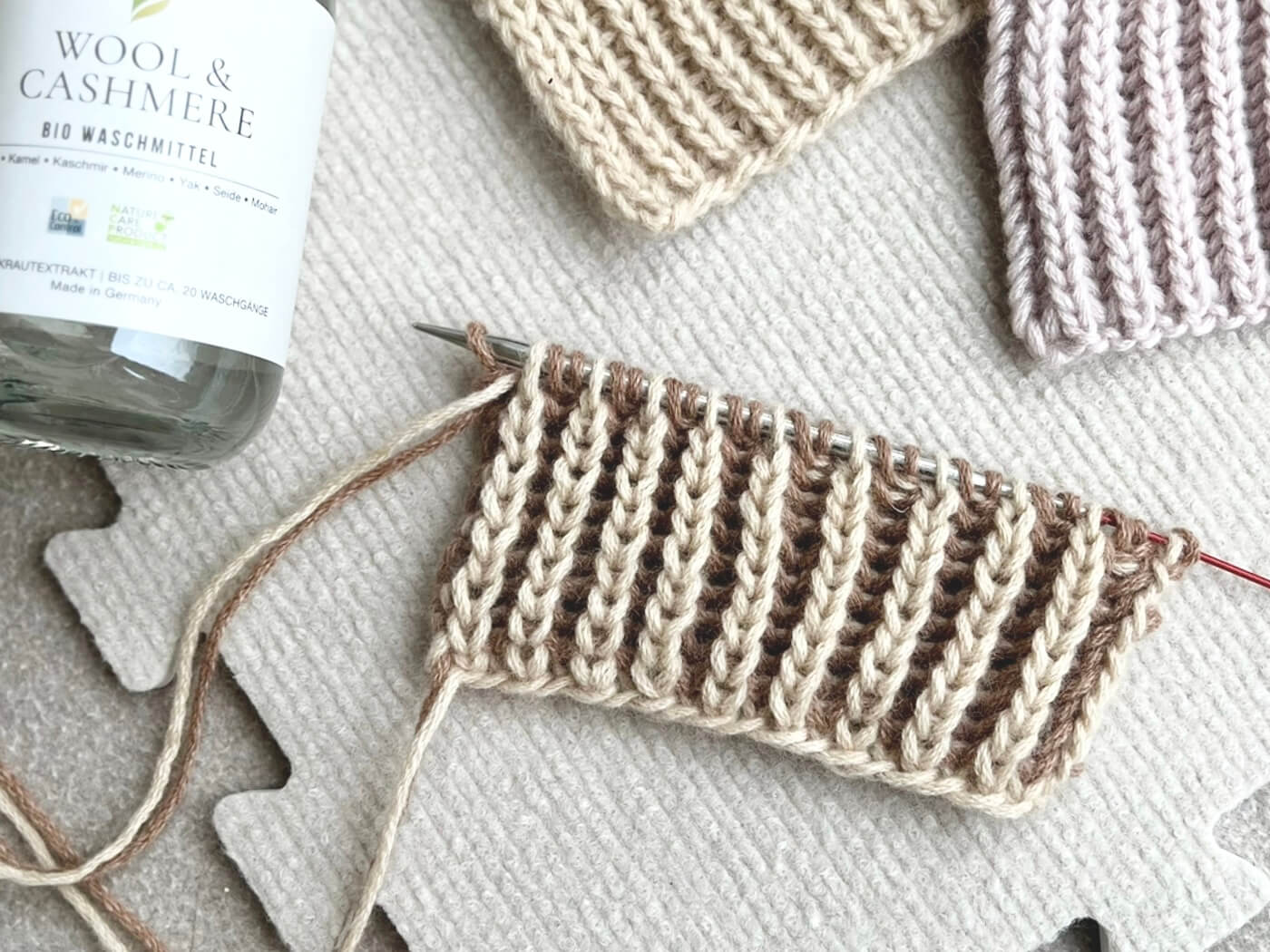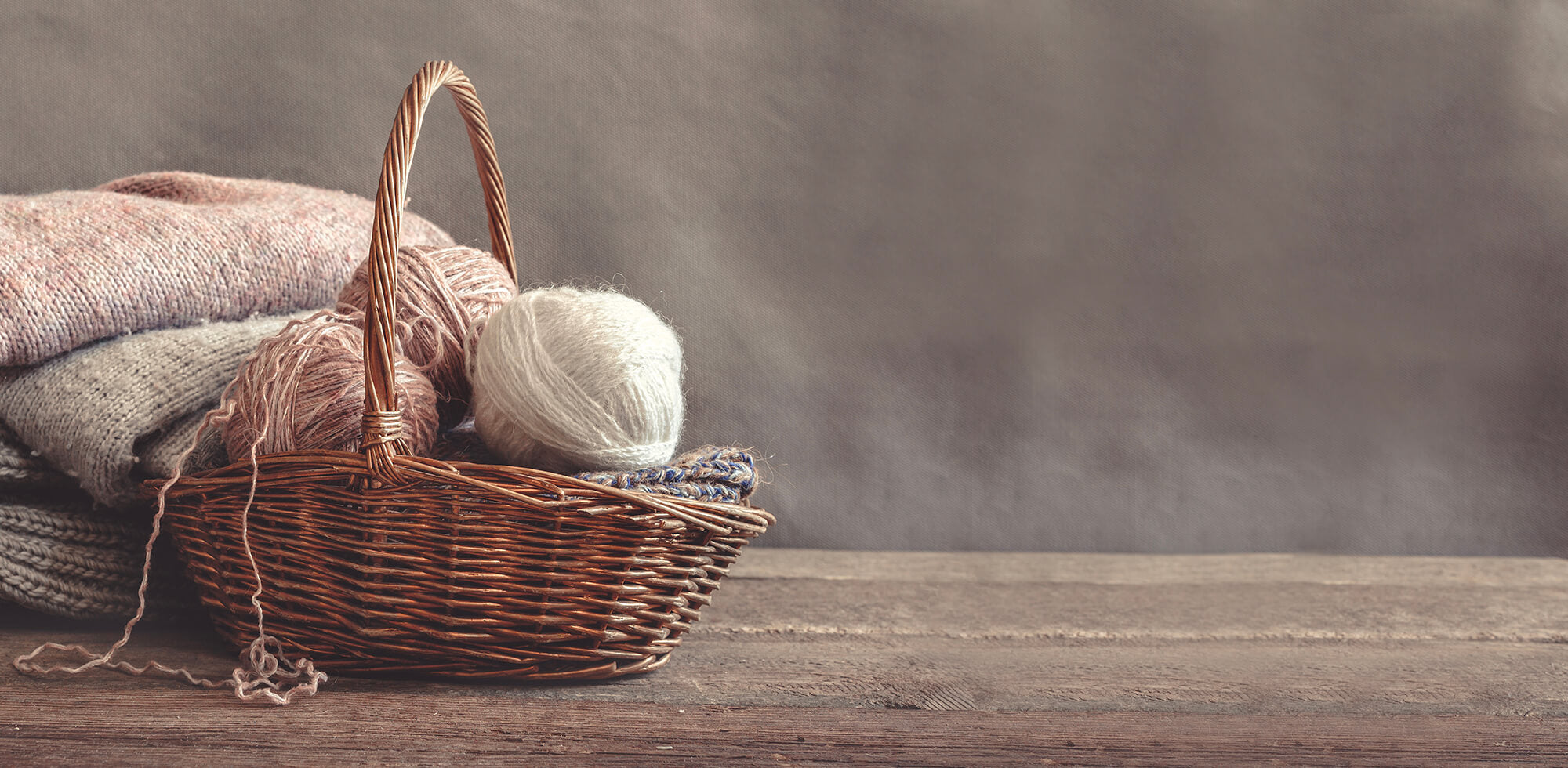By Claudia Ostrop
If you look at the history of knitting, it quickly becomes clear that it has a lot of chapters - but the first ones are missing. There are only guesses about the "hour of birth" of knitting, about how and, above all, when it came about.
However, one thing is certain: knitting is a very old and very important cultural technique, because alongside woven fabrics, knitted fabrics have become an integral part of our everyday lives. After all, a t-shirt or sweatshirt, like most of what we wear, is nothing more than (machine) knitted.
Even if the exact history of the origins of knitting to the trendy hobby of today cannot be explained, we would like to give you at least a brief outline of the history of our favourite pastime.
The First Knitted Garments

If some sources are to be believed, knitting would have been invented hundreds of years before Christ. However, there is no evidence of this - which is not surprising, because textile fibres - whether animal or plant based - do not easily survive the millennia. They are subject to a natural decomposition process and will eventually simply disappear.
In the collection of the Victoria & Albert Museum in London there is the oldest pair of Egyptian toe socks (that could have been worn well with sandals) dated 300-500AD. The British Museum, also in London, has a 1,700-year-old children's striped sock in its inventory. Archaeologists found them (around 100 years ago) in a kind of garbage dump in the ancient city of Antinoupolis.
(Image source: Tabi (hosiery).jpg - Wikimedia Commons / Titel: tabi / Artist: D. Ring)
Knotless Netting as a Precursor to Knitting
Both sock finds have one thing in common: Strictly speaking, they were not knitted at all. They were made using the technique of knotless knitting, also known as single-needle knitting. This technique is more like sewing than knitting. Singles strands of yarn are pulled through the eye of a sewing needle and the yarn is then tied together in a series of loops all the way around. The strands are knotted together and result in a stable and dense fabric.
In addition to the finds in ancient Egypt, there is also numerous evidence that the Vikings in Denmark also produced textiles using the nålbinding technique. Needle binding is a relatively time-consuming craft, and it is believed that two-needle knitting quickly developed from this technique.
From the Middle East to Europe and Elsewhere
Some researchers believe the discovery of a pair of bone needles from Late Antiquity and iron needles from the 600 AD indicate knitting as we know it today. However, this is still very vague because the oldest knitted pieces that have been found date from the early Middle Ages.

There are simply too few findings that can be used to draw conclusions about the exact time when knitting began. Researchers now agree that knitting had its origins in the Middle East and it was brought to Italy and Spain via the Silk Road, from where it spread to the rest of Europe.
Finds of knitted pillow covers from the late 13th century indicate that the Spanish Moors cultivated knitting as a real art form. The first depiction of a knitting Madonna dates from the 14th century. Around 1410 the image of a Madonna was created, working with four circular knitting needles on a piece of knitting reminiscent of a short-sleeved sweater. Or was it a robe for the Jesus child? This motif adorns the main altar in the Petri Church in Buxtehude in northern Germany.
In general, knitted fabrics played a role in the church early on: probably from the 9th century, finger gloves were used during lithurgical services – in the early form they were needle-tied, but from the 13th century they were “correctly ” knitted. They were mostly made of silk or linen and also lavishly embroidered.
(Image source: KnittingMadonna.jpg - Wikimedia Commons / Titel: KnittingMadona / Artist: Master Bertram)
Knitting as a Craft
The guild of (commercial) knitters was first mentioned in Paris in 1268. Knitting guilds emerged in Spain and the Netherlands in the 15th century. In Germany, the first evidence of commercial knitting can be found in Nuremberg, where trouser and stocking knitters were certified in the late 16th century.
In the Late Middle Ages, knitting developed into a recognized craft. At the beginning of the 16th century, the knitters were among the six most important artisan guilds in Paris. This status can probably be traced back to the high popularity of knit stockings, a garment that became a powerful fashion trend for men at the time.
At the end of the 16th century, an English priest constructed a knitting machine for stockings: Queen Elizabeth I, however, banned it because she feared the jobs of the many hand knitters would be lost. Pastor Lee then tried his luck in France – his success there is regarded as a forerunner of the mechanization that later heralded the Industrial Revolution. To support the cap knitting trades, there was – also in England – the "Cappers Act" of 1571, which mandated the wearing of woolen caps (made in England!) for every person over the age of six and below the rank of "gentleman" working on Sundays and public holidays.
In the guilds, knitting was initially a male trade. In order to be allowed to become a member of the Strasbourg hand knitters' guild, a three-year "training period" was required! Applicants were also required to craft masterworks to demonstrate their skills, including a cap, a cardigan, a pair of gloves, and a floral tapestry.
The Spread of Knitting Worldwide
Knitting came too Europe from the Middle East. European emigrants ensured that this cultural technique found its way into America early on. In Japan, however, knitting was almost unknown for a long time. Only in the middle of the 19th century was this craft made known by foreigners. As the country opened up, more and more Japanese became familiar with knitting and it was able to gain popularity. The situation was similar in China too. The technique of knitting became known there through imported stockings and underwear.
Knitting as a Pastime - and as a Necessity
As the importance of knitting as an art declined and manufactured textiles became more commonplace, women began to knit to earn money. When mechanization took its course in the 18th century and more and more machine-made knitwear came onto the market, "wage knitting" largely disappeared.
Knitting became a pastime for high society over the years. In England in the 18th and 19th centuries, for example, "fancy knitting" was a popular pastime for well-to-do women, who demonstrated their skill and taste in all kinds of decorative objects such as richly decorated (pin) cushions. The forerunners of today's women's magazines offered all sorts of inspiration.
During and after the two world wars, in the 20th century, knitting regained an increasingly practical importance. People could knit for themselves and their family to have warm clothes. Many knitted garments for loved ones at the front lines. For others, it was a way to improve their income.
Knitting Today
After the global political and economic situation calmed down again in the middle of the last century and clothes could be bought off the peg as a matter of course, many women remembered their handwork and, of course, knitting skills. The advent of inspirational women's magazines made knitting once again more of a pastime than a necessity. Knitting experienced a huge boom in the 1980s.
We are currently right at the top of the knitting wave again - not least the internet and the associated literally limitless availability of knitting patterns, inspiration and of course yarns of all kinds have helped knitting to become very popular again.




2 comments
Rosa Ines
Información, desde donde envían? Conocer productos.
Información, desde donde envían? Conocer productos.
Lisa
Großartiger Einblick in die Geschichte des Strickens! Vielen vielen Dank!
Großartiger Einblick in die Geschichte des Strickens! Vielen vielen Dank!